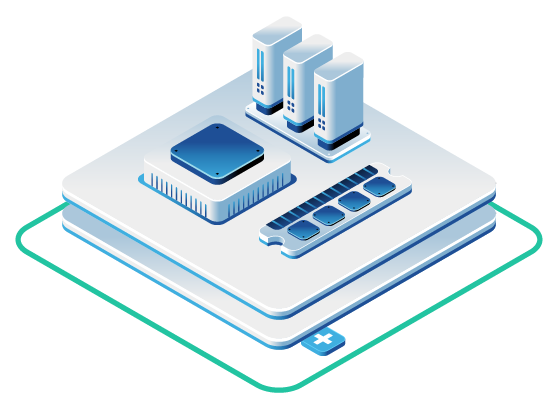![[RI] The Runway Compression Trap How Cloud Spend Quietly Shortens Your Exit Timeline](https://openmetal.io/wp-content/uploads/2025/10/RI-The-Runway-Compression-Trap-How-Cloud-Spend-Quietly-Shortens-Your-Exit-Timeline-1024x536.png)
Runway Intelligence is OpenMetal’s executive insight series for late-stage startups and their investors, exploring how cloud economics, infrastructure design, and operational strategy shape valuation, margins, and time to exit.
Key Takeaways
- Cloud costs compound like debt interest, reducing your effective runway by months without obvious warning signals
- Infrastructure inefficiency directly impacts valuation multiples—companies with better gross margins command 2-3× higher valuations despite similar revenue
- The shift to profitability-focused investing means burn multiple now matters more than growth rate when securing funding or exit valuations
- Treating cloud spend as a board-level KPI and implementing architectural discipline can extend runway by 20-40%
- Every dollar overspent on cloud infrastructure is a dollar stolen from your negotiating leverage at the cap table
You’ve raised your Series B. Your 18-month runway feels comfortable. Your engineers are shipping features. Revenue is climbing. Then, six months later, your CFO delivers the news: you’re down to 14 months of cash. What happened?
The culprit isn’t usually payroll bloat or failed marketing campaigns. It’s the invisible tax hiding in your cloud bills—consumption that scales faster than revenue, compounding month over month like credit card interest. By the time leadership notices, the damage is done. What investors call “runway compression” has already shortened your exit timeline, weakened your negotiating position, and reduced your valuation multiple.
This isn’t theoretical. This is the reality facing late-stage startups that assumed they could “fix cloud costs later.” But later has arrived, and the bill is due.
The Invisible Series A Tax
Cloud costs don’t just burn capital—they metastasize. Unlike fixed expenses that remain predictable, cloud consumption follows a compounding curve that catches finance teams off guard.
Consider the math: if your cloud spend grows 8% month-over-month (common for startups scaling infrastructure alongside user growth), you’re looking at spending three times your current amount annually. That’s not linear growth—it’s exponential decay of your runway.
The problem stems from a fundamental misalignment between how cloud providers price their services and how startups actually consume them. Most cloud platforms offer elasticity—the ability to spin up resources on demand. But elasticity comes with opacity. Dynamic pricing, usage-based billing, and complex discount structures make forecasting nearly impossible for finance teams working three-quarter projections.
For private SaaS companies, current valuation multiples hover around 4.8× to 5.3× annual recurring revenue, depending on funding structure. But here’s what matters: the spread between top-performing and bottom-performing companies has widened dramatically, with the highest valuations reaching beyond 20× ARR while laggards trade below 2× ARR. Infrastructure efficiency is one of the key differentiators separating winners from the rest.
Every percentage point improvement in gross margin translates directly to valuation premium. Two SaaS companies with identical $20M ARR can see wildly different outcomes based solely on infrastructure costs. The company running 75% gross margins might command an 8× revenue multiple, while their competitor at 55% margins barely gets 4×—a $160M valuation versus $80M for the same revenue base.
This is the invisible Series A tax: cloud bills that quietly erode both runway and enterprise value, compounding through each funding round until exit or acquisition.
When Growth Outpaces Infrastructure Maturity
Most late-stage startups are running Series D revenue on Series A infrastructure. The scrappy architecture that worked at $2M ARR becomes an expensive liability at $20M.
The symptoms are predictable: over-provisioned instances humming at 15% CPU utilization. Zombie workloads consuming storage for projects abandoned two quarters ago. Redundant development and testing clusters that multiply because “spinning up another environment is easy.” Data egress fees that surprise your CFO every month because nobody tracked which services are chatting across regions.
This isn’t negligence—it’s the natural consequence of prioritizing speed over efficiency during growth phases. Your engineering team makes rational decisions in isolation: provision extra capacity for peak load, maintain separate staging environments for each team, replicate data across regions for redundancy. Each choice is defensible. Collectively, they bloat costs by 40-60%.
The accountability gap makes matters worse. In most startups, nobody owns the cloud bill. Engineering focuses on uptime and velocity. Finance tracks the number but lacks technical context. By the time someone with both authority and technical fluency investigates, the architectural decisions are baked into your product.
Private SaaS companies currently show median growth rates around 30% annually, down from 35% the previous year. Meanwhile, cloud costs for these same companies often grow 40-50% year-over-year. That gap—consumption outpacing revenue—is runway compression in action.
The Valuation Angle: Why Cloud Spend Matters to Investors
Your investors care about three numbers when evaluating your business: growth rate, gross margin, and burn multiple. Infrastructure costs directly impact two of them.
Gross margin tells investors how much revenue drops to the bottom line after delivering your service. For SaaS companies, gross margins typically range from 70-85%. But infrastructure-heavy architectures can push gross margins below 60%, raising immediate red flags during due diligence.
Companies trading in the bottom quartile of public SaaS valuations show negative profit margins and weak revenue growth, commanding multiples as low as 0.4× to 2.7× ARR. These aren’t failed businesses—they’re companies that let operational inefficiency signal poor fiscal discipline.
Burn multiple—how many dollars you spend to generate each dollar of new ARR—has become the defining metric of the efficiency era. Investors now reward operational efficiency over pure growth, with burn multiple carrying more weight than growth rate in valuation discussions. A company burning $2M monthly to add $1M in new ARR (a 2× burn multiple) will secure better valuations and easier fundraising than a competitor burning $4M for the same $1M in growth.
Andreessen Horowitz’s framework for evaluating growth-stage companies emphasizes that burn multiples matter more than other efficiency metrics because they encompass all business activities—not just sales and marketing—making them the most comprehensive measure of capital efficiency. Their benchmark data shows that companies under $1M ARR typically burn around 3× their new ARR, while companies at $10-30M ARR should target burn multiples closer to 1.5×, with the ultimate goal of reaching cash flow positive (below 1×) as you scale.
Infrastructure efficiency compounds these metrics. Consider two companies, both at $15M ARR with 25% growth:
Company A: 55% gross margins, burns $3M monthly
Company B: 75% gross margins, burns $2M monthly
Company A’s burn multiple is 2.4× ($36M annual burn ÷ $3.75M new ARR). Company B’s is 1.6× ($24M burn ÷ $3.75M new ARR). That difference matters enormously when fundraising or entertaining acquisition offers.
The acquirer evaluating both companies sees Company B as a better investment—not because the product is superior, but because the unit economics are proven. Better margins mean faster path to profitability post-acquisition and higher strategic value.
For IPO candidates, the scrutiny intensifies. Public market investors demand clear paths to profitability, with SaaS companies now expected to show positive EBITDA margins. Infrastructure costs that were “fine” during private funding rounds become deal-breakers when investment banks build your S-1.
The Psychological Trap: “We’ll Fix It After the Next Round”
Every leadership team tells themselves the same story: “We know cloud costs are high, but we’ll address it after this fundraise.” Or after the product launch. Or after hitting the next revenue milestone.
This optimization deferral stems from three sources of organizational inertia.
First, engineering fear of disruption. Your technical team built the current architecture. It works. Users aren’t complaining. Suggesting infrastructure changes feels risky—new failure modes, integration challenges, potential downtime. The path of least resistance is status quo, especially when features and fixes demand immediate attention.
Second, CFO optimism bias. Finance leaders look at the cloud bill and think “We’ll negotiate better enterprise discounts” or “We’ll hire a FinOps specialist next quarter.” These tactical approaches nibble around the edges but rarely address the structural cost drivers embedded in your architecture.
Third, VC tolerance during growth phases. Through 2021, investors explicitly encouraged “growth at any cost” strategies. Cloud bills were acceptable collateral damage if you hit revenue targets. Public SaaS company valuations peaked near 17× ARR in mid-2021, driven by cheap capital and growth-obsessed investors. Why worry about infrastructure costs when your last round priced you at 25× forward revenue?
But capital markets shifted. By 2022, public SaaS valuations dropped to the 6-7× ARR range and have remained there. The efficiency era arrived while many late-stage startups were still operating with growth-era assumptions.
These patterns normalize overspend until a stalled fundraise exposes the truth. You enter Series C conversations expecting a 12-month process at a $200M valuation. Six months in, you’re stuck at $150M with term sheets contingent on hitting profitability milestones. Suddenly, that cloud bill isn’t a “we’ll fix it later” problem—it’s an existential threat to your runway.
Breaking the Trap: A Practical Framework
Reclaiming runway requires both visibility and architectural discipline. Here’s how forward-thinking leadership teams are addressing the compression trap:
1. Make Cloud Spend a Board-Level KPI
Your monthly board deck shows revenue, burn rate, and runway. It should also show infrastructure cost as a percentage of revenue, trend over the last six quarters, and projection for the next four.
Making cloud costs visible changes the conversation. When your board sees infrastructure expenses growing faster than revenue, they’ll ask the right questions. Why is our infrastructure spend rising 40% YoY when revenue is growing 25%? What architectural decisions are driving this? What alternatives exist?
Action item: Add three metrics to your board deck: (1) Infrastructure cost as % of revenue, (2) Month-over-month infrastructure growth vs. revenue growth, (3) Gross margin trend with infrastructure as the primary driver.
2. Conduct an Infrastructure Audit
Most companies discover 30-40% waste in their first serious infrastructure audit. Common culprits include:
- Over-provisioned resources: Instances sized for peak load running 24/7 at 10-20% utilization
- Zombie workloads: Test environments, POC deployments, or abandoned projects still consuming resources
- Redundant environments: Multiple staging/development environments that could be consolidated
- Inefficient data movement: Unnecessary cross-region replication or data egress patterns
- Outdated architectures: Services that haven’t been re-architected as usage patterns evolved
Action item: Commission a 30-day infrastructure audit examining your top 20 services by cost. Task someone with both technical and financial fluency to lead it—often a senior architect or engineering manager with P&L interest.
3. Shift from Elasticity to Predictability
Public clouds sell elasticity as the primary value proposition—scale up instantly, pay only for what you use. But late-stage startups don’t need infinite elasticity. You need predictability.
Your workloads are largely stable. You know your baseline compute, storage, and bandwidth requirements with reasonable accuracy. Peak capacity needs are generally predictable based on product cycles and customer patterns. The elasticity premium you’re paying rarely matches the value you’re receiving.
Consider architectural patterns that prioritize cost predictability:
- Reserved capacity: Commit to baseline resources with reserved instances or savings plans (typically 30-50% cheaper than on-demand)
- Right-sizing discipline: Match instance types to actual workload requirements rather than over-provisioning for hypothetical spikes
- Workload scheduling: Run batch jobs, analytics, and non-time-sensitive tasks during off-peak pricing windows
- Multi-cloud or hybrid strategies: Evaluate whether moving predictable workloads to fixed-cost infrastructure makes financial sense
Action item: Calculate what percentage of your compute, storage, and bandwidth is truly variable versus predictable baseline. For most Series B+ companies, 60-80% of infrastructure is baseline that could benefit from fixed-cost models.
4. Implement FinOps Governance
Create operational discipline around infrastructure spending with continuous monitoring and accountability:
- Resource tagging: Tag all infrastructure with cost center, environment (prod/staging/dev), and owner
- Budget alerts: Set spending thresholds that trigger alerts before overruns become significant
- Regular review cycles: Monthly infrastructure cost reviews with engineering leads
- Cost attribution: Make teams responsible for their infrastructure spend with chargebacks or showbacks
- Optimization sprints: Quarterly initiatives to reduce costs by 10-15% through architectural improvements
Action item: Implement a policy that all new infrastructure deployments require cost projections and CFO approval above certain thresholds (e.g., $5K/month).
5. Tie Infrastructure Decisions to Burn Multiple
When engineering proposes new services or architectural changes, finance should ask: “How does this impact our dollars-per-new-ARR metric?” If the answer is unclear, the decision needs more scrutiny.
This doesn’t mean starving your technical team of necessary resources. It means applying the same ROI thinking to infrastructure that you apply to marketing spend or sales headcount. Every line item in your cloud bill should have a business justification tied to revenue generation or strategic capabilities.
Action item: Create a simple framework for infrastructure ROI. New infrastructure investments should either (1) directly enable revenue growth, (2) reduce operational costs, or (3) mitigate critical business risks. Everything else is discretionary.
6. Evaluate Alternative Architectures
The cloud landscape offers more options than it did five years ago:
- Private cloud platforms: Dedicated infrastructure with predictable pricing, suitable for baseline workloads
- Bare metal providers: Maximum price-performance for compute-intensive workloads
- Edge computing: Reduce data transfer costs by processing closer to users
- Database-as-a-service alternatives: Often more cost-effective than running your own databases on cloud VMs
- Open-source infrastructure: Self-managed solutions that eliminate vendor lock-in and licensing costs
Each option involves tradeoffs between cost, operational complexity, and flexibility. The right architecture depends on your workload characteristics, team capabilities, and growth trajectory.
Action item: Run a cost-benefit analysis comparing your current architecture against two alternatives. Include migration costs, operational overhead changes, and three-year TCO projections.
OpenMetal: A Fixed-Cost Alternative for Predictable Workloads
For startups serious about runway extension: While the strategies above are vendor-agnostic, OpenMetal offers a specific solution to the predictability problem. Our hosted private clouds provide fixed monthly pricing for compute, storage, and bandwidth—eliminating the usage-based billing that causes runway compression.
“The startups that win the next funding cycle won’t be the ones that grew fastest,” says Todd Robinson, co-founder of OpenMetal. “They’ll be the ones that proved they can scale efficiently. Fixed-cost infrastructure isn’t a technical compromise—it’s a strategic advantage when investors demand operational discipline.”
Built on OpenStack and Ceph open-source technologies, OpenMetal gives you the same infrastructure flexibility as hyperscale clouds—APIs for automation, orchestration for workloads, integration with CI/CD pipelines—without the unpredictable costs. You deploy dedicated infrastructure with transparent pricing: fixed monthly costs for your compute nodes, storage capacity, and bandwidth allocation.
Companies conservatively see 20-40% infrastructure cost reduction when moving predictable workloads from public clouds to OpenMetal’s private cloud platform. For a company spending $100K monthly, that’s $20-40K in savings—potentially extending an 18-month runway to 22-24 months without raising additional capital.
The Investor View: Efficiency as the New Growth
The capital markets signal is unambiguous: operational efficiency matters more than growth rate in today’s investment environment. Venture investors who previously celebrated “burn bright, grow fast” strategies now scrutinize unit economics with the intensity they once reserved for growth metrics.
This shift reflects both higher interest rates and the recognition that many fast-growing companies built unsustainable economics during the cheap-money era. The companies that survived the valuation correction of 2022-2023 did so by demonstrating fiscal discipline and clear paths to profitability.
For founders and executives, this creates both pressure and opportunity. The pressure: you can no longer defer hard conversations about cost structure with promises of future scale. The opportunity: infrastructure efficiency becomes a differentiator that commands valuation premiums.
Your investor pitch changes from “We’re growing 100% YoY” to “We’re growing 50% YoY with a 1.5× burn multiple and a roadmap to profitability in 18 months.” The latter narrative wins in 2025’s capital markets, especially at late stages where investors evaluate risk-adjusted returns more carefully than Series A gamblers do.
Equity-backed companies currently show median growth of 30%, down from 35% previously, while bootstrapped companies report 25% median growth. The compression in growth rates makes efficiency metrics the primary battleground for valuation differentiation.
The startups commanding premium valuations in this environment share common traits: gross margins above 70%, burn multiples below 2×, clear line of sight to profitability, and operational discipline that signals strong management. Infrastructure efficiency isn’t the whole picture, but it’s increasingly the difference between securing the round you want and settling for the round you can get.
Extending Your True Runway
Every line in your cloud bill is a line off your runway. Not metaphorically—literally. That $15,000 you’re spending monthly on over-provisioned instances is $180,000 annually that could extend your cash 45 days longer. The $50,000 in redundant development environments costs you three additional months of runway over 18 months.
This isn’t about becoming the cheapest company in your space. It’s about being the most disciplined. About proving to investors that you understand unit economics and make deliberate tradeoffs rather than allowing costs to compound unchecked.
The startups that navigate the efficiency era successfully will be those that treated cloud costs as a strategic variable rather than an operational afterthought. They’ll be the ones who asked hard questions about infrastructure architecture before runway became critical. Who chose predictability over elasticity when their workloads warranted it. Who recognized that infrastructure efficiency is a proxy for leadership quality.
Your next fundraise, acquisition discussion, or IPO process will include uncomfortable questions about gross margins, burn multiples, and path to profitability. The time to address those questions isn’t during diligence—it’s now, while you still have runway to maneuver.
Cloud cost control isn’t merely saving money. It’s buying time, leverage, and better exit options. The invisible Series A tax becomes visible when you run out of runway. Don’t wait until then to address it.
FAQ
Q: How much can infrastructure optimization with OpenMetal actually extend our runway?
Companies typically discover 30-40% waste in their first serious infrastructure audit, translating to 20-40% cost reduction after optimization. For a company spending $100K monthly on cloud infrastructure, that’s $20-40K in monthly savings. On an 18-month runway with $1.8M in the bank, saving $30K monthly extends runway to approximately 22 months—four additional months of negotiating leverage and product development time.
Q: Won’t optimizing infrastructure disrupt our product roadmap and engineering velocity?
Not if approached strategically. Most infrastructure optimization can happen in parallel with product development. Start with quick wins: rightsizing over-provisioned resources, eliminating zombie workloads, and consolidating redundant environments. These changes typically don’t touch production code. For more significant architectural changes, phase them over 3-6 months during natural product cycle breaks, moving non-critical workloads first while maintaining production stability.
Q: At what stage should startups seriously focus on cloud cost optimization?
The inflection point typically occurs between $5-10M ARR when infrastructure costs become material enough to impact gross margins and burn multiples (usually representing 10-15% of revenue). Earlier-stage companies benefit from focusing on product-market fit rather than cost optimization. Late-stage companies (Series B+) with predictable workloads should make infrastructure efficiency a board-level priority, especially when approaching fundraising or exit conversations.
Q: How do I convince my engineering team that infrastructure optimization won’t limit technical capabilities?
Frame the conversation around gaining financial leverage while maintaining technical flexibility, not about accepting technical compromises. Engineers respond well to: (1) Data showing exactly where money is being wasted, (2) Recognition that architectural discipline is an engineering excellence problem, not just a cost problem, (3) Clear scope that distinguishes optimization from migration or platform changes, (4) Involvement in solution design rather than having changes imposed. Make senior technical leads part of the solution by tasking them with finding the most elegant ways to reduce costs.
Q: What metrics should we track to know if our cloud costs are becoming a runway problem?
Monitor three key metrics monthly: (1) Infrastructure cost as percentage of revenue (healthy range: 8-15% for SaaS)—if this is rising, you have a problem developing. (2) Month-over-month infrastructure cost growth versus revenue growth—costs should grow slower than revenue; if infrastructure costs grow faster for three consecutive months, you’re in runway compression. (3) Burn multiple (target below 2× for late-stage companies)—if infrastructure inefficiency is pushing your burn multiple above benchmarks for your stage, address it immediately. Set board-level alerts when any metric moves outside healthy ranges.
Works Cited
- “2024 Growth Benchmarks for Private SaaS Companies.” SaaS Capital, www.saas-capital.com/blog-posts/growth-benchmarks-for-private-saas-companies. Accessed 9 Oct. 2025.
- “2025 Private SaaS Company Valuations.” SaaS Capital, www.saas-capital.com/blog-posts/private-saas-company-valuations-multiples. Accessed 9 Oct. 2025.
- George, David, and Justin Kahl. “A Framework for Navigating Down Markets.” Andreessen Horowitz, a16z.com/a-framework-for-navigating-down-markets. Accessed 9 Oct. 2025.
- “SaaS Valuation Multiples: 2015–2025.” Aventis Advisors, aventis-advisors.com/saas-valuation-multiples. Accessed 9 Oct. 2025.


































